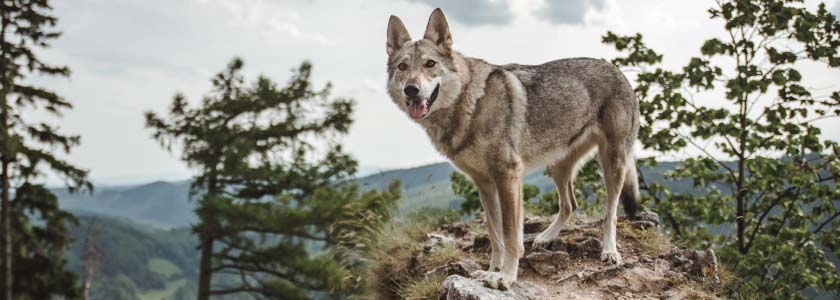Rare Mexican wolf packs augmented with captive-raised pups to boost genetic variability

The decades-long effort to kill wolves in the United States has had a profound impact on the species’ genetic diversity.
Back in 2004, the lack of genetic diversity was catalogued in detail by a study which found that historic wolves had twice the genetic diversity of those present today. Genetic diversity is a big deal for wildlife as it helps the animals confront change and adversity, but even the advances found in genetic science today can’t replicate the genetic diversity now missing—it can take thousands of years for natural mutations to build up the diversity needed to sustain wild animal populations, especially those in peril, such as Canis lupus bailey, the Mexican gray wolf.
How Many Types of Wolves are There?
Globally, there are three species of wolf: Gray Wolf, Red Wolf, and the Ethiopian Wolf.Gray wolves once roamed from central Mexico north to the Arctic Ocean, but today are generally found in Canada, Alaska, the northern Great Lakes Region, and the northern US Rockies. For years, it was thought that there were 32 subspecies of gray wolf, though today biologists generally recognize just four: Arctic, Great Plains, Mexican, and Northwestern.
Mexican Gray Wolf
Of those, the Mexican wolf is the rarest and has the smallest range. All Mexican wolves today descend from just seven founding animals who escaped extermination. Their wild descendants are tucked into a cluster of high, dry mountains straddling the southern half of the Arizona-New Mexico border.How many Mexican wolves are left?
Estimates place the current wild mexican wolf population at about 163, with another 240 in captive breeding. When species numbers are so low, animals face significant issues sue as low genetic diversity, increased genetic drift, and inbreeding depression, explains an article in the Journal of Mammology.Now, however, a unique effort by biologists is aiming to bolster that long-sagging genetic diversity.
Cross Festering of Mexican Wolves
In May, researchers placed a record number of captive-born wild Mexican gray wolf pups into the wild. In a technique called “cross-fostering,” captive bred pups less than two weeks old were placed in dens with similarly aged pups to be raised as wild wolves. The captive-born pups came from litters at facilities in New Mexico and Arizona, as well as Missouri, Kansas, and California, reported The (San Jose, California) Mercury News.
“Managing genetics is one of the biggest challenges facing Mexican wolf conservation, even as constant progress is being made to numeric recovery,” Jim deVos, from the Arizona Fish and Game Department, told The Mercury News. “Science has proven that cross-fostering young pups works in increasing genetic diversity.”
Since 2014, at least 10 cross-fostered wolves have survived to the end of the calendar year during which they were introduced to the wild population.
In 2018, four pups were flown from the Endangered Wolf Center in Missouri to the Southwest where they were cross-fostered with two wild packs, one each in Arizona and New Mexico.
“Extreme terrain and logistics make fostering challenging, and the timing has to be just right,” the center noted. “Wild and captive litters have to be born within a few days of one another, and the transfer from captivity to the wild has to occur before the pups are fourteen days old.”
In 2019, a dozen pups were cross-fostered into the wild, with five placed in dens in Arizona and seven going to New Mexico; they came from the Endangered Wolf Center in Missouri as well as facilities in Indiana, Kansas, and New York.
With the pups in place, officials tracking the Mexican wolf’s recovery are in wait-and-see mode.
Current rules restrict Mexican gray wolves to areas south of Interstate 40 in New Mexico and Arizona, although suitable habitat is found to the north, such as around the Grand Canyon and in the mountains of southern Colorado and northern New Mexico. Rule changes are important, implores Defenders of Wildlife.
“This would this allow genetically distinct animals an opportunity to live in the wild and, by establishing geographically distinct populations that could be connected by occasionally dispersing individuals, Mexican wolves would be afforded more long-term stability and protection against random events like a disease outbreak that could harm a single, geographically isolated population,” the advocacy group said recently.
With packs in the United States growing, what about Mexico? The last wolves were spotted there in 1980, but a reintroduction program begun in 2011 has seen the herd re-established and there are now 31 wolves in Sonora and Chihuahua, reports the Center for Biological Diversity. Wolves in Mexico have been poisoned with blood thinner, and the lack of public lands leaves officials with fewer options for releases and suitable wolf habitat.
